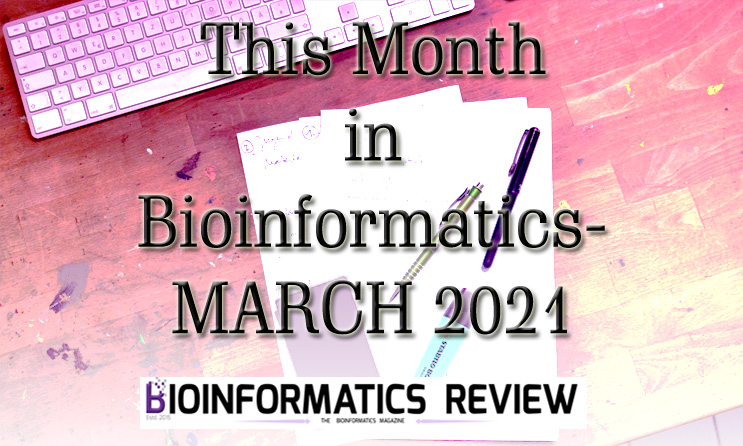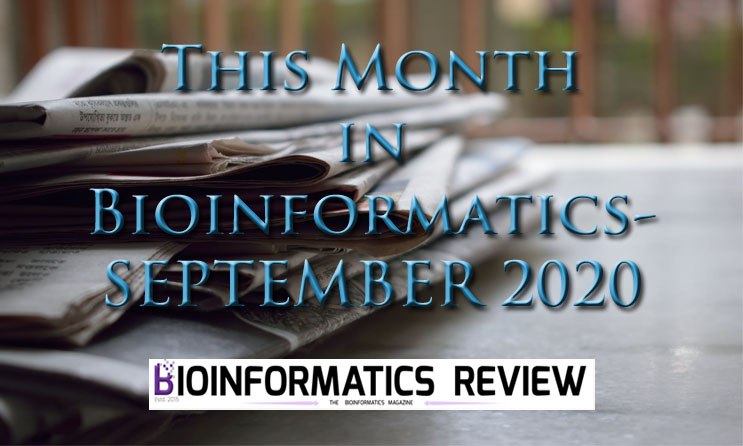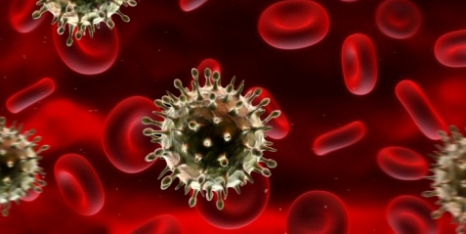Here, we summarize the latest interesting findings made this month in bioinformatics.
1. The SARS-CoV-2 N-protein is dynamic & disordered in nature.
A new study has shown that the SARS-CoV-2 nucleocapsid protein (N-protein) is dynamic and disordered in nature [1]. Additionally, it also undergoes phase separation with RNA [1]. The authors have attempted to find out the phenomenon by which the various folded and disordered domains interact with each other by applying single-molecule spectroscopy and all-atom simulations. They have found that N-protein undergoes phase separation with model RNA in vitro under different salt conditions [1].
For more information, read here.
2. New information regarding the binding pattern of SARS-CoV-2 and ACE-2
A new comparative study is published showing the structural and functional details of the interactions of SARS-CoV-2 spike glycoproteins and angiotensin enzyme-2 (ACE-2) receptor [2]. The authors of this paper analyzed the interactions between SARS-CoV-2 and ACE-2 receptors using bioinformatics approaches. They have found that the binding affinity of SARS-CoV-2 with the ACE-2 receptor is higher than that of SARS-CoV. This increased binding affinity may be due to the mutations that occurred at three critical points in SARS-CoV-2. These three mutations include Asn479Gln, Pro462Ala, and Leu472Phe.
For more information, read here.
3. A new refined model of force field for coarse-grain molecular dynamics simulation
A new general-purpose refined model of force field called Martini3 is developed for coarse-grain MD simulation [3]. This version consists of new bead types, improved interaction balance including specific interactions such as hydrogen bonding and electron polarizability. Martini3 provides more accurate predictions than the previous versions and other force fields for coarse-grain MD simulation [3].
For more information, read here.
4. A novel cloud platform for long-read metagenomic analyses
A novel cloud platform called BugSeq is developed for long-read metagenomic analyses [4]. BugSeq is a metagenomic classifier of nanopore reads that provides highly accurate results [4]. It is deployed on a cloud for easy access and is freely available at https://bugseq.com/free for non-commercial use. Users can easily upload their data without requiring any high computing facility. The authors tested its performance on simulated data, mock microbial communities, and real clinical samples. It showed higher accuracy than other tools including MetaMaps, CDKAM, and Centrifuge [4].
For more information, read here.
5. A new tool for alignment & visualization of contigs & reads and chimera detection
A new tool called Alvis is developed for easy alignment and visualization of contigs and reads [5]. It can also be used for chimera detection. Alvis is a user-friendly command-line tool capable of generating visuals of common alignment tasks. It can generate four different kinds of diagrams and accepts the input in different formats including BLAST tabular, PAF format from minimap2, SAM files, PSL file, and MUMmer’s .coords and .tiling files [5]. Alvis is written in Java with a simple command-line interface. It is platform-independent unless it consists of a Java Runtime Environment. Alvis is freely downloadable from Github.
For more information, read here.
6. A new tool to convert VCF files into HL7 FHIR format
A new utility called vcf2fhir is developed to convert variant calling format (VCF) files into HL7 FHIR format for the purpose of genomics electronic health records (EHR) integration [6]. Fast healthcare interoperability resource (FHIR) is a data format and an application programming interface to exchange EHR. HL7 FHIR language is an emerging language for EHR interoperability. vcf2fhir utility converts VCF files into HL7 FHIR diagnostic report. The source code of vcf2fhir is available on Github.
For more information, read here.
References
- Cubuk, J., Alston, J.J., Incicco, J.J. et al. (2021). The SARS-CoV-2 nucleocapsid protein is dynamic, disordered, and phase separates with RNA. Nat Commun 12, 1936.
- Jafary, F., Jafari, S. & Ganjalikhany, M.R. (2021). In silico investigation of critical binding pattern in SARS-CoV-2 spike protein with angiotensin-converting enzyme 2. Sci Rep 11, 6927.
- Souza, P.C.T., Alessandri, R., Barnoud, J. et al. (2021). Martini 3: a general purpose force field for coarse-grained molecular dynamics. Nat Methods.
- Fan, J., Huang, S. & Chorlton, S.D. (2021). BugSeq: a highly accurate cloud platform for long-read metagenomic analyses. BMC Bioinformatics 22, 160.
- Martin, S., Leggett, R.M. (2021). Alvis: a tool for contig and read ALignment VISualisation and chimera detection. BMC Bioinformatics 22, 124.
- Dolin, R.H., Gothi, S.R., Boxwala, A. et al. (2021). vcf2fhir: a utility to convert VCF files into HL7 FHIR format for genomics-EHR integration. BMC Bioinformatics 22, 104.




